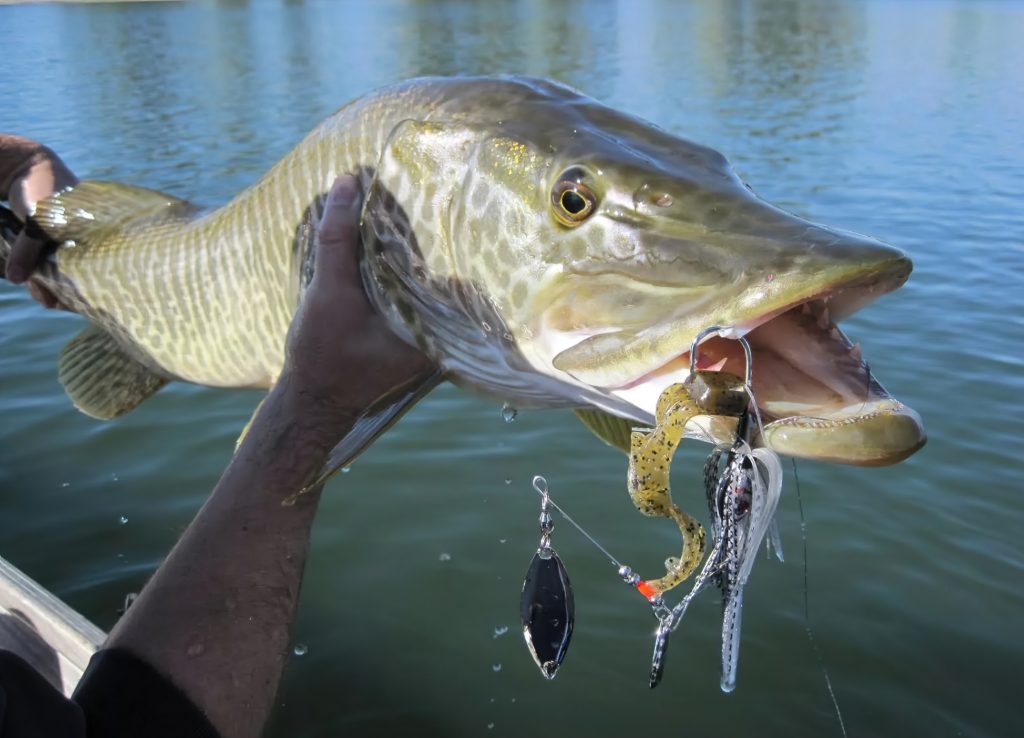As the leaves begin to change and the air turns crisp, professional anglers gear up for one of the most exciting fishing events of the year: autumn muskie fishing. Muskie, also known as musky or muskellunge, are one of the largest and most prized fish in North America. In this article, we’ll explore the essential skills and techniques needed for a successful muskie catch during the peak season.
Preparing for Autumn Muskie Fishing
Preparing for autumn muskie fishing requires careful planning and preparation. One of the most important factors is choosing the right location. Look for areas with good structure, such as drop-offs, weed beds, and points. Also, consider the water temperature, as muskie tend to prefer cooler water in the fall.
Another important aspect is selecting the right gear. Muskie require heavy tackle, such as heavy-duty rods, large reels, and strong line. It is also important to use high-quality lures that mimic the prey of muskie, such as large crankbaits, jerkbaits, and topwater lures.
Timing is also crucial when preparing for muskie fishing in the fall. Muskie tend to feed more aggressively during low-light periods, such as dawn and dusk. Pay attention to weather patterns as well, as changes in barometric pressure can trigger feeding activity.
Techniques for Muskie Fishing
Muskie fishing requires specific techniques to successfully catch this elusive fish. The first step is to use the right gear, including a heavy-duty rod, reel, and line. This will allow you to cast long distances and handle the weight of a large muskie.
Next, it’s important to use the right bait. Large crankbaits, jerkbaits, and topwater lures are popular choices. It’s also a good idea to use live bait such as large minnows or suckers.
When it comes to technique, a slow and steady retrieve is often effective. Muskie are known for following baits for long distances, so it’s important to vary your retrieve and change up your bait to entice a strike. Additionally, using a figure-eight motion at the end of your retrieve can trigger a strike from a following muskie.
Storing and Cooking Muskie
After catching a muskie, it’s essential to keep it in good condition until it can be cooked. Place it in a cooler filled with ice and clean it as soon as possible. There are several popular ways to prepare muskie, including grilling, smoking, and pan-frying. Muskie has a mild, sweet flavor that pairs well with herbs and spices.
Autumn Muskie Fishing in Different Regions
The conditions for muskie fishing can vary widely depending on the region. For example, muskie fishing in Canada may require different gear and techniques than fishing in the United States. Research the specific conditions and regulations for your region to optimize your chances of a successful catch.
Tips for Beginner Anglers
If you’re new to fishing, there are a lot of things to learn before you can become a successful angler. Here are some tips to help you get started:
- Start with the basics. Before you can catch fish, you need to know the basics of fishing. Learn how to tie knots, cast your line, and handle your fishing rod. Practice these skills until they become second nature.
- Choose the right equipment. As a beginner, it’s important to choose the right equipment for the type of fishing you’ll be doing. Talk to experienced anglers, do some research online, and visit your local tackle shop to get advice on the best gear for your needs.
- Know your target species. Before you head out on your fishing trip, do some research on the type of fish you’ll be trying to catch. Learn about their behavior, feeding habits, and preferred habitats. This will help you choose the right bait and technique for a successful catch.
- Practice patience. Fishing requires a lot of patience. You may not catch anything on your first trip, but don’t get discouraged. Keep practicing and learning, and eventually, you’ll become a skilled angler.
Conclusion
Autumn muskie fishing is an exciting and challenging experience that requires skill, patience, and perseverance. By following these tips and techniques, you’ll be well on your way to a successful muskie catch. Remember to respect the environment and follow all regulations to ensure the future of this remarkable fish species.

